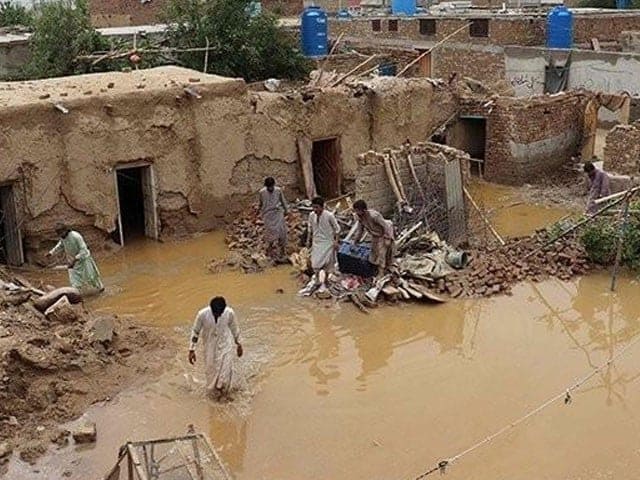Torrential rains have unleashed catastrophic floods across Balochistan, cutting off the province from the rest of Pakistan and plunging many areas into chaos. The relentless downpours have inundated low-lying regions, triggering flash floods that have destroyed vital infrastructure and disrupted daily life.
One of the most significant impacts has been the destruction of the Quetta-Chaman railway line, which was washed away by floodwaters, leading to the suspension of train services. The flooding has also caused widespread damage to roads and communication networks, severely hampering rescue and relief efforts.
Among the worst-affected areas are Chaman and Qilla Abdullah, where floodwaters have invaded homes, and powerful winds have torn solar panels from rooftops. The situation in Jaffarabad is equally dire, with collapsed power lines leaving large swathes of the district without electricity.
Mastung has been hit hard by the deluge, with several homes submerged and at least ten people injured in various incidents. In a tragic turn, a woman was swept away by the floodwaters in the Kurdgap area; her body was later recovered by rescue teams.
In Mach, the Bolan National Highway has been flooded, leading to severe traffic jams as numerous vehicles became stranded at the Herk Causeway. The National Highway Authority (NHA) has reported that the flooding has effectively severed Balochistan’s road links with the rest of the country, prompting authorities to advise against travel on the Bolan Highway.
The floods have also led to the closure of the Quetta-Taftan and Sibi highways, further isolating the province. As Balochistan grapples with this natural disaster, the government is urgently mobilizing resources to assist those affected, but the scale of the destruction presents significant challenges.
The situation remains fluid, with authorities continuing to monitor the weather and flood levels as they work to restore connectivity and provide aid to the stricken regions.













